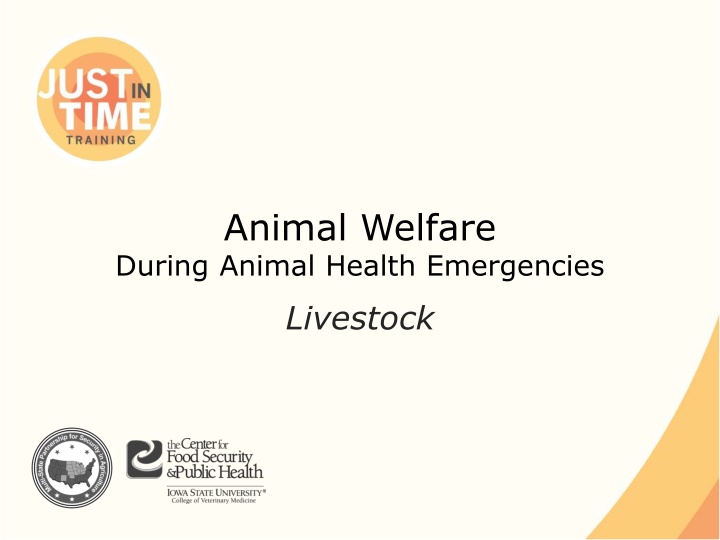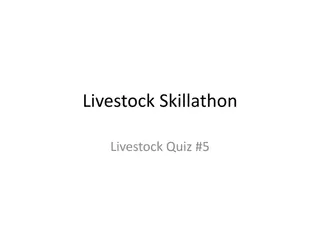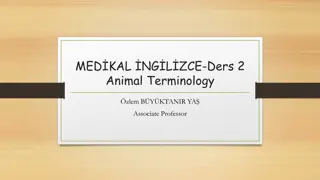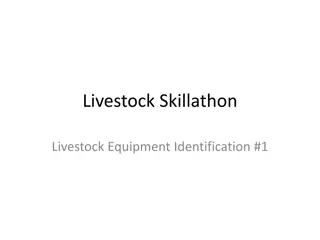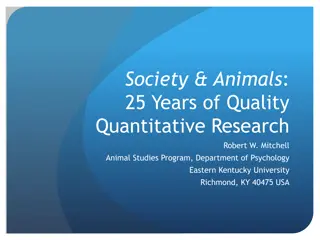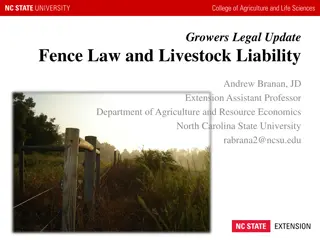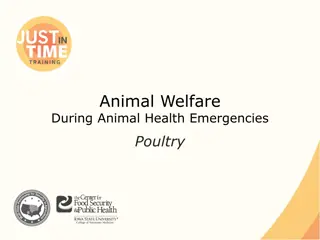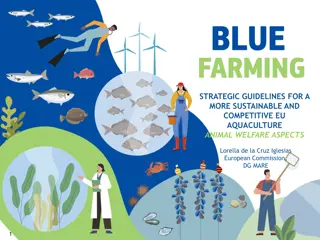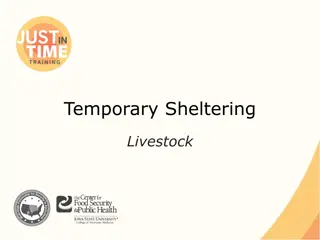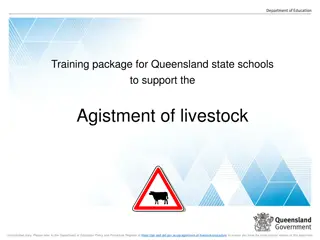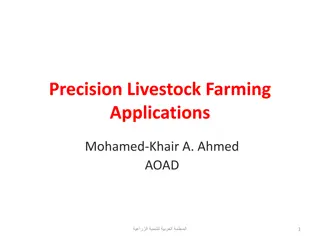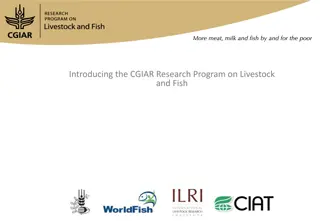Comprehensive Guide to Livestock Animal Welfare During Health Emergencies
Ensuring the welfare of livestock animals during health emergencies is crucial. This comprehensive guide covers various aspects such as ethical responsibilities, the Five Freedoms framework, daily requirements for water and feed, ensuring freedom from discomfort and pain, allowing animals to express normal behavior, and minimizing fear and distress. Proper care and attention are necessary to safeguard the well-being of livestock animals during challenging times.
Download Presentation

Please find below an Image/Link to download the presentation.
The content on the website is provided AS IS for your information and personal use only. It may not be sold, licensed, or shared on other websites without obtaining consent from the author.If you encounter any issues during the download, it is possible that the publisher has removed the file from their server.
You are allowed to download the files provided on this website for personal or commercial use, subject to the condition that they are used lawfully. All files are the property of their respective owners.
The content on the website is provided AS IS for your information and personal use only. It may not be sold, licensed, or shared on other websites without obtaining consent from the author.
E N D
Presentation Transcript
Animal Welfare During Animal Health Emergencies Livestock
Animal Welfare Ethical responsibility Ensuring well being Physical and mental Consideration of Health Behavior Biological function Continuously evaluate Animal Welfare: Livestock Just In Time Training
The Five Freedoms Define ideal states of welfare Framework for analysis of welfare Freedom from hunger and thirst Freedom from discomfort Freedom from pain, injury, and disease Freedom to express normal behavior Freedom from fear and distress Animal Welfare: Livestock Just In Time Training
Freedom from Hunger and Thirst Water (per head per day) 6-9 gallons Feed (per head per day) Cattle 8-20 pounds hay Pigs Sheep Goats 1-3 gallons 3 quarts 3 pounds grain 3 pounds hay Daily requirements vary with species and age Monitor feed/water intake Animal Welfare: Livestock Just In Time Training
Freedom from Discomfort Appropriately sized confinement space Stalls or outdoor pens Protect from elements Appropriate temperature for time of year Ventilation Bedding Saw dust Wood chips Straw Waste management Animal Welfare: Livestock Just In Time Training
Freedom from Pain, Injury, and Disease Examine upon entry/exit Illness Injury Nutritional well-being Treat appropriately Medical, surgical Euthanasia Monitor May have delay in showing signs Stress analgesia Animal Welfare: Livestock Just In Time Training
Freedom to Express Normal Behavior Livestock Herd animals Prey animals Anxious when isolated Pigs: Inquisitive nature and strong natural urge to escape Goats: Difficult to keep confined Animal Welfare: Livestock Just In Time Training
Freedom from Fear and Distress Recognize normal vs. abnormal Elevated stress unpredictable Experienced handlers Safe transport Avoid overcrowding Familiar groups Group by species, age, gender, farm of origin, pregnant animals Animal Welfare: Livestock Just In Time Training
Responders: Mental Health and Animals Response stress Can affect responder mental health May affect animal welfare Responder apathy Responder fatigue Uncompleted tasks Carelessness of tasks Forgetting overall welfare needs Animal Welfare: Livestock Just In Time Training
Resources American Veterinary Medical Association The veterinarian s role in animal welfare www.avma.org/products/animal_welfare/welfare.pdf AVMA Guidelines on Euthanasia www.avma.org/issues/animal_welfare/euthanasia.pdf USDA Animal Welfare Information Center http://awic.nal.usda.gov OIE Animal Welfare Guidelines Terrestrial Animal Health Code www.oie.int American College of Animal Welfare www.acaw.org Animal Welfare: Livestock Just In Time Training
Acknowledgments Development of this presentation was by the Center for Food Security and Public Health at Iowa State University through funding from the Multi-State Partnership for Security in Agriculture Authors: Dawn Bailey, BS; Glenda Dvorak, DVM, MPH, DACVPM
